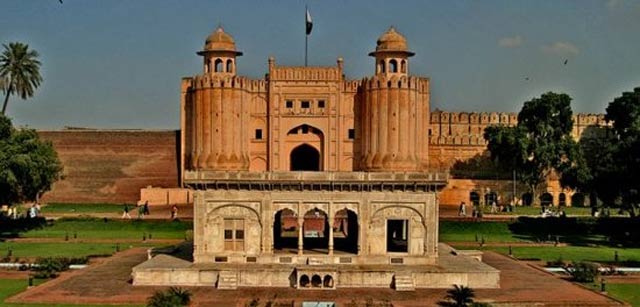
LAHORE: Many of us are witness to how the way Lahore went through a metamorphosis after Independence and the direction it took for expansion. However, it is rare that the reasons behind the expansion of any important city are explored.
This was part of the discussion by Dr Ghafer Shahzad, the Punjab Auqaf Department’s chief architect, at a session organised by THAAP as part of its talk series on culture, art and architecture.
The 34th talk of the series titled’From Greater Lahore to Greater Iqbal Park’ was held on Saturday where the expansion plan of Lahore was studied in detail how the city has turned up recently and what went wrong on the way.
Dr Ghafer told the audience that initially after Independence, the expansion plan of the city was formulated in 1956 as ‘Lahore Today and Tomorrow’ by the local government authority then known as the Lahore Improvement Trust. The modern Lahore took its shape from ‘Greater Lahore Project’ between 1960 and 1965 that has been revised continuously.
Ambulance service for expecting mothers launched in Lahore

“Our ruling authorities are continuously changing the city form and giving her new identities,” he said.
“Despite the presence of many city management organisations like Lahore Metropolitan Corporation, Water and Sanitation Agency and Parks and Horticulture Agency, the ground reality is that the real control of the city lies somewhere else – with a few ruling political, social and economic parties that have monopolised the administrative setup.”
Dr Ghafer said as long as the Lahore city remained within its walls, controlling it administratively was relatively easy. Initially the city went through several attempts for an organised and controlled setup during the British Raj, he added.
A sanitation committee was formed in 1858 while the municipal committee was formed in 1911. In 1922, Lahore Improvement Trust was found where representatives from each religious community were picked to run these committees.
Reviewing the past and present, Dr Ghafer believed the present day city management organisations were helpless when it came to political and economic power houses. “With time the management has rather become a party itself for the ruling elites,” he said.
He recalled that one of the many plans put forth by the local government, a ‘Master Plan for Greater Lahore’ was introduced in 1973. Despite the exhaustive details, the plan could never be implemented in its true sense and today it still goes on with many amendments, he said.
“Today there are more than 300 private housing societies, which have turned authorities like WASA and LDA into business facilitators,” he alleged, adding that Lahore is a dynamic city, continuously changing its shape.
At least 26 suffer injuries as fire breaks out at Lahore sale market
“We all should write and share our experiences to keep the facts on record,” said Dr Ghafer, who got his Bachelor’s and Master’s degrees in architecture. He later completed his PhD from the UET Lahore and MA Urdu degree as a private student in 1987-88 from Punjab University.
He started as a poet and later on wrote short stories, criticism and travelogues. He has written extensively and his books include Lahore Ghar, Galiyan, Darwazay, Lahore Kay Minar, Masajid-e Lahore, Lahore – Nai Sadi, Niya Shahr, Lahore – Kal, Aaj aur Kal.
Published in The Express Tribune, January 16th, 2017.





























































COMMENTS
Comments are moderated and generally will be posted if they are on-topic and not abusive.
For more information, please see our Comments FAQ